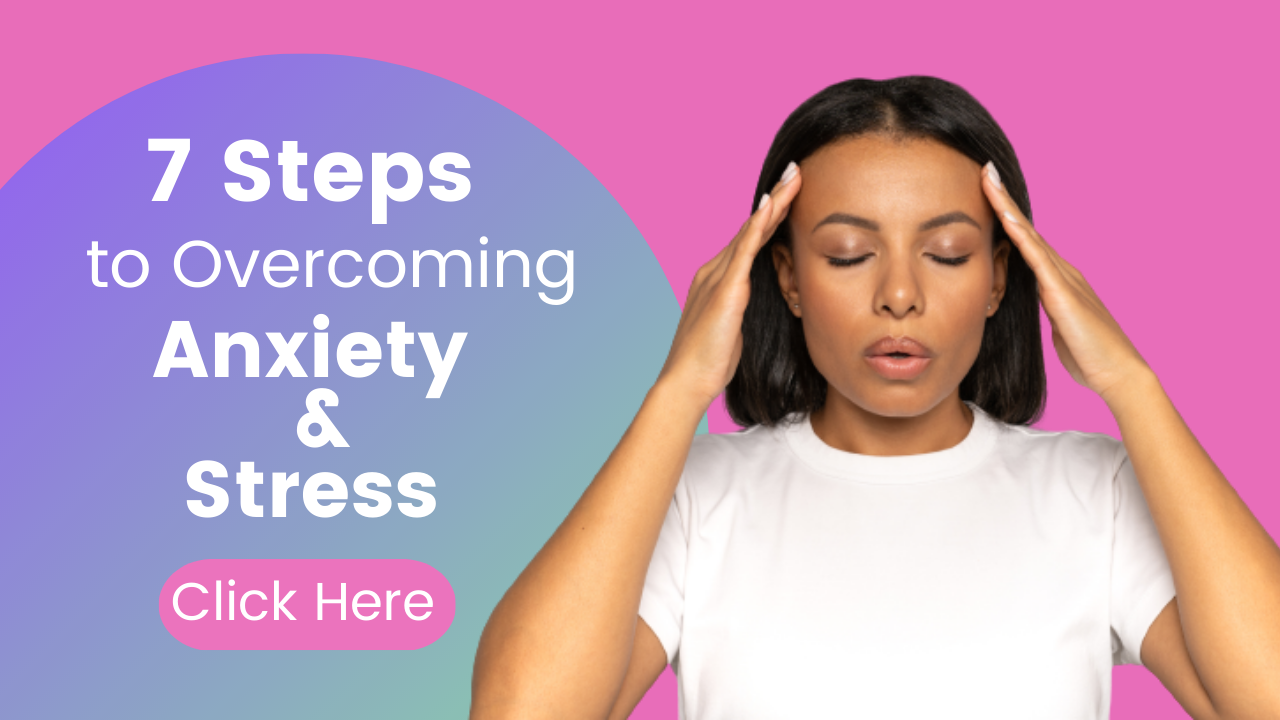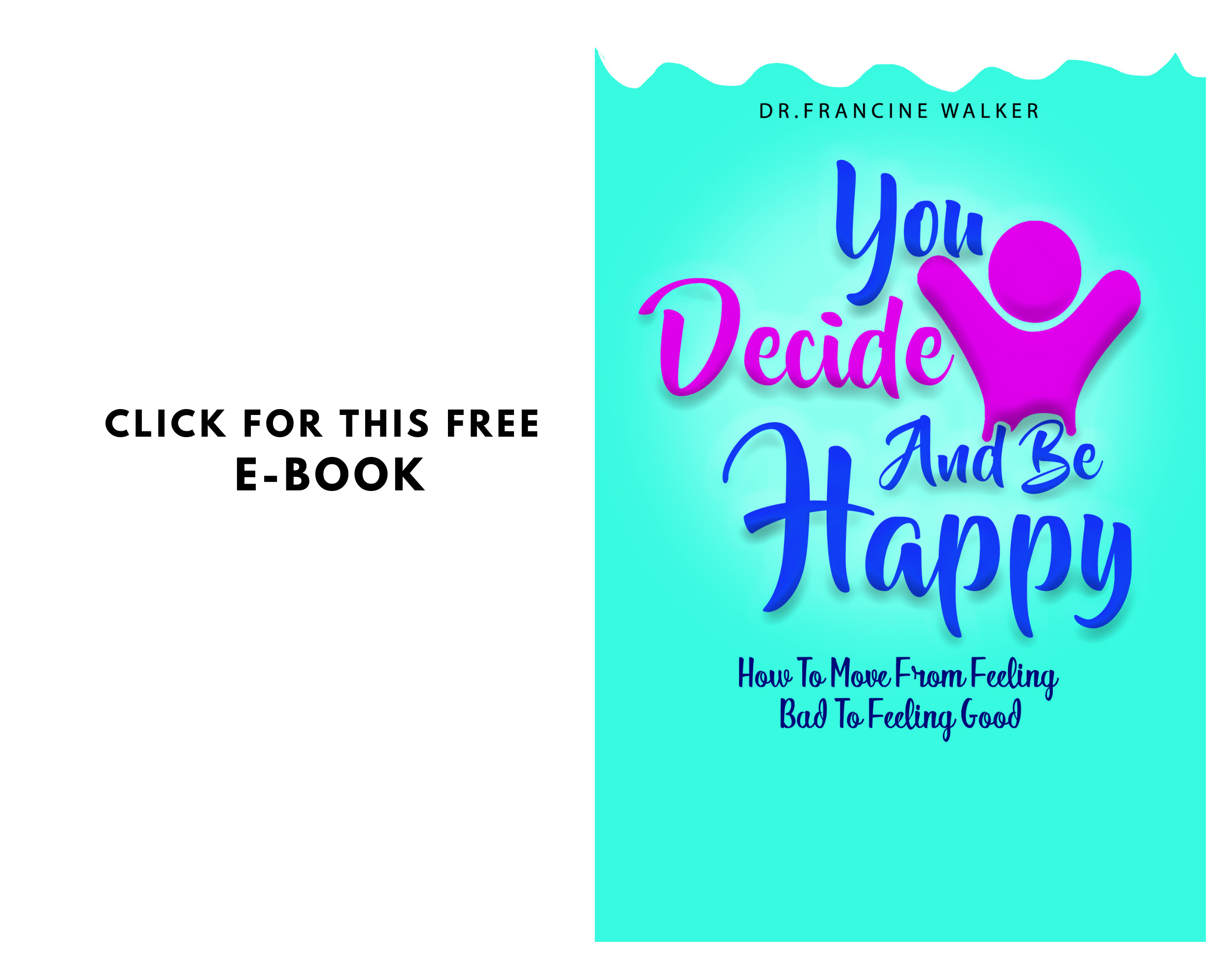Avoid 3 Mistakes that Increase Anxiety -Here's a Step-by-Step Guide to Calm Down
Nearly everyone experiences worry and anxiety at some point but when you find yourself worrying often there is cause for concern that you might have an anxiety problem.
According to the National Alliance on Mental Illness (NAMI) anxiety disorders are the most common mental health concern in the United States since over 40 million adults in the U.S. (approximately 19%) have an anxiety disorder, and approximately 7% of children aged 3-17 experience issues with anxiety each year.
Anxiety is excessive worry and apprehensive expectation that leaves you restless, fatigued, irritable, and tense. The American Psychological Association (APA) specifies that anxiety is characterized by feelings of tension, worried thoughts and physical changes.
Not everyone experiencing anxiety actually meets the criteria for an anxiety disorder. Most people experience situations they find overwhelming and sometimes it's difficult for them to cope. Here are examples of 5 situations where you might find yourself feeling anxious and tense:
- Often feeling so overwhelmed you sometimes need to drink alcohol to calm yourself down
- As a parent you are often worried your child's poor grades, sad mood or negative behavior will prevent him/her from having a good future
- You often feel worried and stressed out because of your job and can hardly find time for your family let alone yourself
- You got a medical report showing a serious diagnosis and you are often worried about your health and your family's future
- You often feel tired from worrying about money and your family's meagre finances
Even if your anxiety does not meet criteria for an anxiety disorder it is serious if it is significantly hampering your life. If your anxiety remains unaddressed or ignored, its symptoms could get worse leading to physical and mental break-down.
Physical problems include: heart palpitations, nervousness and sexual dysfunction. Mental problems include: sleepless nights, tiredness and lack of focus making it harder for you focus at work and stay connected to your spouse and your kids.
Knowing how to safely manage your anxiety and calm yourself will strengthen your nervous system and give you the mental capacity needed to maintain peace of mind.3
 Mistakes that Increase Anxiety
Mistakes that Increase Anxiety
In an effort to feel better when anxious people often make the following 3 mistakes. Ironically, making these mistakes on a constant basis leads you to feeling even more anxious:
1. Ignoring Your Anxious Mind and Tense Body
There is a common saying, "When the going gets tough, the tough gets going." This saying is meant to encourage you to pushing past challenges and persevere. But sometimes it's misconstrued and you believe you should "tough it out," ignore your anxious mind, tense body and just keep ploughing through. Unfortunately this makes the anxiety effects worse because it results in emotional and physiological numbness, mental and physical break-down.
2. Trying to Control All Aspects of the Situation
Another mistake that increases anxiety is trying to control all aspects of the situation. There are certain roles that require you to take control of situations or events, such as being a manager or a parent. However, you know you are being too controlling when you get very anxious when aspects of the situation do not go your way.
Examples of controlling behaviors include: performing tasks yourself because you believe the task should only be done a certain way; you often feel nervous or worried when someone else is in charge of the finances so you keep complaining or find a way to "fix" it so that you get control of the money; You often ensure that meetings and gatherings happen on your turf so that you can control every aspects of what happens etc.
After trying really hard to grasp at the myriad of factors in situations you eventually realize that you can’t anticipate or fix every aspect of any situation. Also, trying to fully control the situation leads you to becoming insecure, controlling, nervous, and often on edge.
3. Trying to Control Others
When you often find yourself irritable, lashing out at others and barely finding time to take care of yourself, you know you are not managing well. The snapping behavior occurs because elevated anxiety stifles your ability to clearly communicate your thoughts and feelings, or meaningfully connect with others.
To try calming the anxiety, you make the mistake of trying to control others so you can feel calm. Such actions include: often micromanaging others so that they do exactly what you want them to do; often telling others what they should say and/or do; often watching or "checking up" on someone because you find it difficult to relax if you do not know where he/she is, what he/she is doing, and with whom. Often this is done out of a belief that if you control others it would increase your feelings of security. But that is an illusion.
When you try to control others, after a while you become more anxious and exhausted. And even after trying so hard to control what others do, you eventually realize that you can’t really control another person’s actions. Trying to control others, moves you away from having the ease and peace of mind you want.
An Effective Tool that Works
How do you avoid these mistakes? You can apply the acronym S.T.E.P.
T - Take the time to soothe your mind and body
E - Endeavor to learn the skills needed to overcome the anxiety and overwhelming
P - Practice these skills daily, so you can keep anxiety and stress at bay!
Because it is physiologically impossible to feel calm and anxious at the same time, you can manage anxiety at the moment you feel overwhelmed by using the functions of your body to access the feeling of calm and relaxation. A powerful way to do this is by practicing a paced breathing exercise called Diaphragmatic Breathing.
Diaphragmatic Breathing
When you experience an intense negative emotion such as anxiety, your breathing changes. If you reflect on the last time you felt really anxious you may recall that the more your anxiety intensified, the more shallow your breathing became. Additionally, the more intense the anxiety, the quicker your breathing rate thus requiring you to take more breaths per second than when you are relaxed.
You may also notice that when you are taking quick, shallow breaths your shoulders and chest simultaneously rise on each inhale and fall on exhale. In contrast, diaphragmatic breathing engages the stomach muscles, diaphragm and abdominal muscles when you breathe.
Diaphragmatic breathing is a technique that allows you to deliberately pace your breathing and facilitate the flow of oxygen throughout your body. The oxygenation happens as you actively permit your diaphragm to pull down with each inward breath and push up with each exhale while your shoulders and chest remain still.
Here's how you do diaphragmatic breathing:
- Sit or stand in an upright position i.e., make sure you are not slouching or leaning. If you are lying down lie on your back and straighten your body position.
- Slowly inhale through your nostrils, making sure the deep breaths go down and expand your stomach. You know you are inhaling correctly when you see or feel your stomach expanding while your shoulders and chest remain still.
- When you feel your stomach filled with air, hold the breath for a paced count - 1, 2, 3 4, and visualize each number as you count.
- Through your mouth, slowly exhale the breath while using your abdominal and stomach muscles to gently push all the air out without moving your shoulders or chest.
- Repeat this process until you feel calm and your breathing is returned to a normal pace.
So the next time you feel anxious try changing your physiology by implementing the diaphragmatic breathing to relax and calm yourself down.
If you want to quickly get the tools to overcome your anxiety consider this online course showing 7 steps you can take to eventually get to the constant feeling of calm and ease. (Click image below to learn more).
 How to Know if you Have An Anxiety Disorder?
How to Know if you Have An Anxiety Disorder?
Perhaps you find yourself worried and tense and are wondering what to do to stop the worry. Perhaps you are wondering if you have an anxiety disorder.
There are different types of anxiety disorders but the following symptoms may be present in each:
- Excessive worry or anxiety
- Restlessness, feeling keyed up or on edge
- Being easily fatigued
- Difficulty concentrating or mind going blank
- Irritability
- Muscle tension
- Sleep disturbance (difficulty falling or staying asleep, or restless, unsatisfying sleep)
Only a physician or a licensed mental health professional is qualified to diagnose and treat anxiety disorders. Consider consulting with such a professional who is licensed to practice in your state so that he/she will let you know if you have an anxiety disorder, and begin treatment.
Summary
The American Psychological Association (APA) specifies that anxiety is characterized by feelings of tension, worried thoughts and physical changes. This article emphasizes that while most people feeling anxiety do not have an anxiety disorder, they should consider anxiety serious because if not addressed, it could lead to physical and mental break down.
3 Mistakes that increase anxiety are: ignoring your anxious mind and body, trying to control all aspects of the situation, and trying to control others. Controlling the situation or others may bring short term wins but eventually leads to increased anxiety and tension. Instead S.T.E.P. (Stop "toughing it out," Take the time to soothe your mind and body, Endeavor to learn the skills need to overcome the anxiety, and Practice them daily). An effective practice to adapt is using your physiology of diaphragmatic breathing to calm down when anxious. Also, you can know how to stop the anxiety by viewing this FREE online training.


